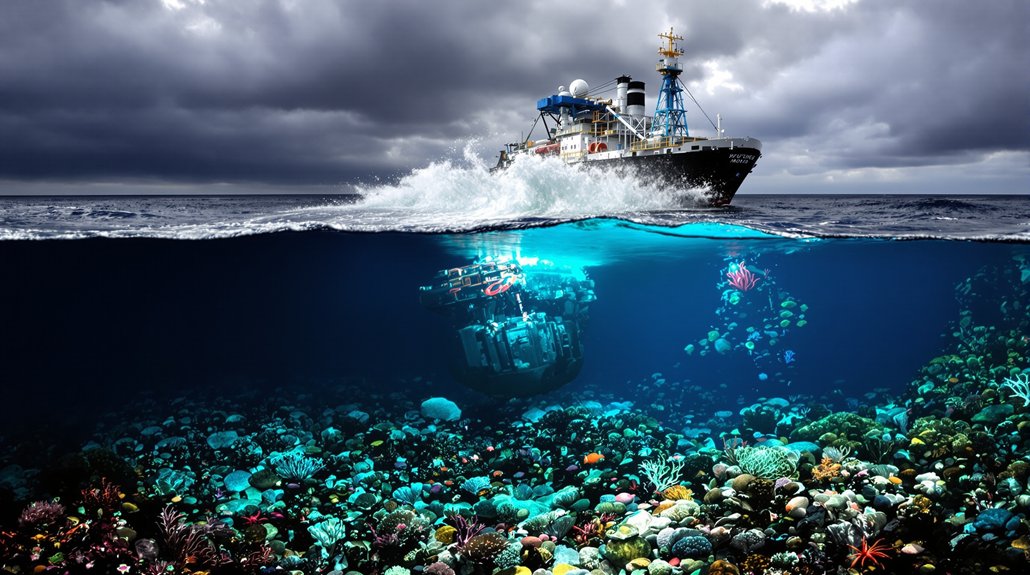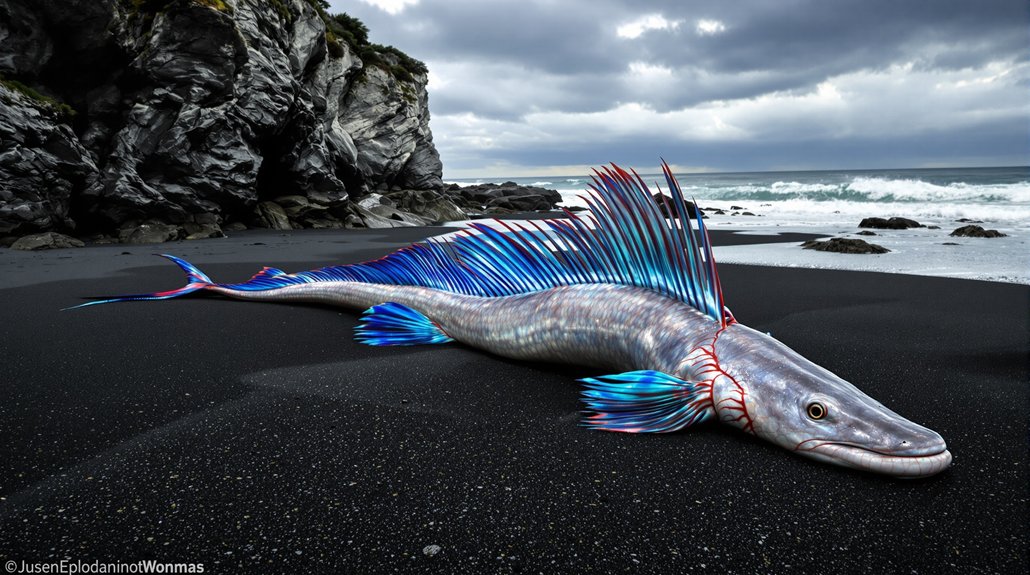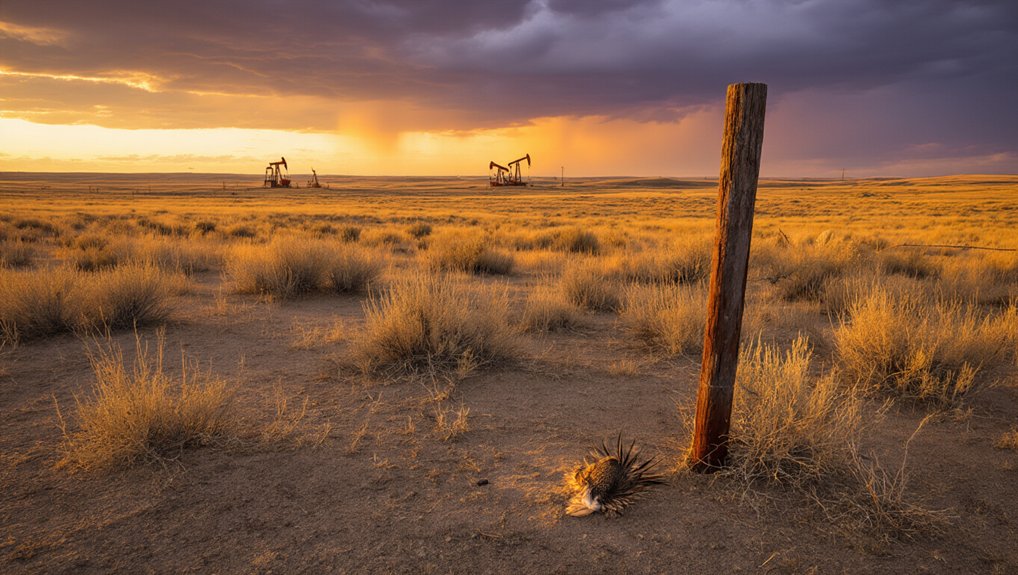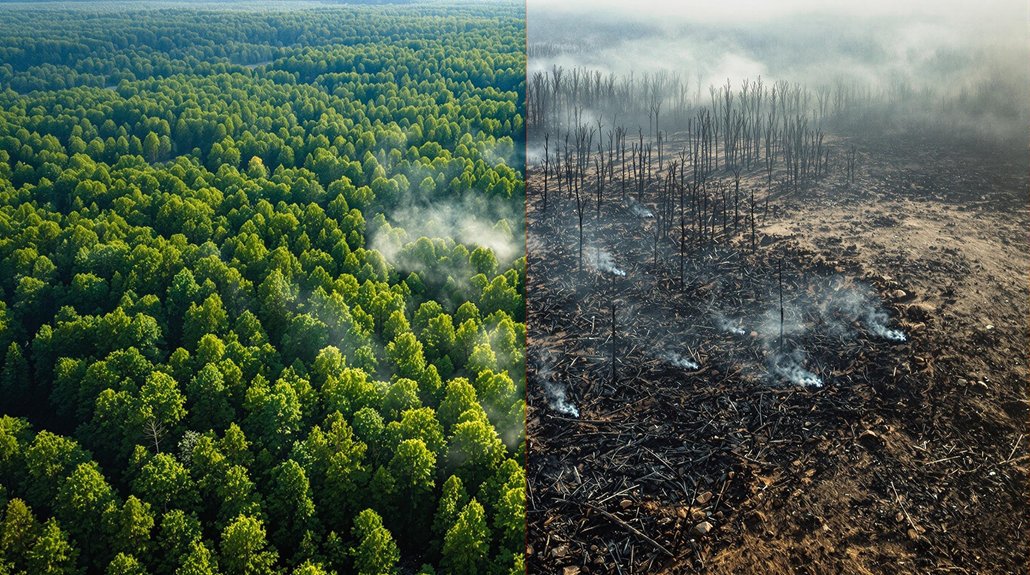As the planet’s climate crisis accelerates, deep-sea mining emerges as a potential tipping point for marine ecosystems already under siege. The industrial-scale extraction of polymetallic nodules and sediments isn’t just scraping the ocean floor—it’s potentially sabotaging our largest carbon sink. Talk about bad timing.
These mining operations crush everything in their path. Sponges, filter feeders, and countless slow-moving organisms don’t stand a chance against the mechanical onslaught. A single operation can destroy hundreds of square kilometers of seafloor habitat. Gone. Just like that.
The evidence is damning. Mining scars from experiments conducted 44 years ago are still visible on the Pacific seabed. Forty-four years! The ocean doesn’t just bounce back from this kind of assault.
What’s particularly maddening is the carbon angle. The deep ocean serves as Earth’s most efficient carbon storage system. Disturb those carbon-rich sediments, and you’ve got a climate double-whammy—destroying carbon sinks while potentially releasing stored CO2. Genius move when we’re trying to stabilize the climate, right?
The sediment plumes aren’t staying put, either. They travel kilometers, smothering marine life and altering water chemistry. Oxygen levels drop. pH changes. Temperature fluctuates. For creatures that have evolved in stable conditions for millions of years, these changes are catastrophic.
Pacific nations have the most to lose. Their economies depend on tuna and other fisheries that could collapse if food webs are disrupted. The waste discharge from mining vessels could significantly harm vital fisheries stocks and threaten food security for small island states. The polymetallic nodules themselves support complex ecosystems that, once gone, are gone forever. Many species in these habitats are rare, slow-growing, and reproduce at glacial rates. They can’t adapt to sudden, violent habitat destruction.
The Clarion-Clipperton Zone in the Pacific Ocean holds mineral resources estimated to be 5 to 10 times greater than all terrestrial reserves combined, making it a prime target for mining interests despite the ecological risks.
The international community faces a stark choice: temporary mineral gain or permanent ocean protection. With mining scars lasting generations and biodiversity loss projected to be irreversible, the stakes couldn’t be higher. The fractures forming around this issue reflect an uncomfortable truth—our climate solutions shouldn’t create new environmental catastrophes.
References
- https://www.frontiersin.org/journals/marine-science/articles/10.3389/fmars.2025.1598584/full
- https://www.wri.org/insights/deep-sea-mining-explained
- https://deep-sea-conservation.org/key-threats/
- https://noc.ac.uk/news/new-study-reveals-long-term-impacts-deep-sea-mining-first-signs-biological-recovery
- https://www.bgs.ac.uk/news/new-study-reveals-long-term-effects-of-deep-sea-mining-and-first-signs-of-biological-recovery/








